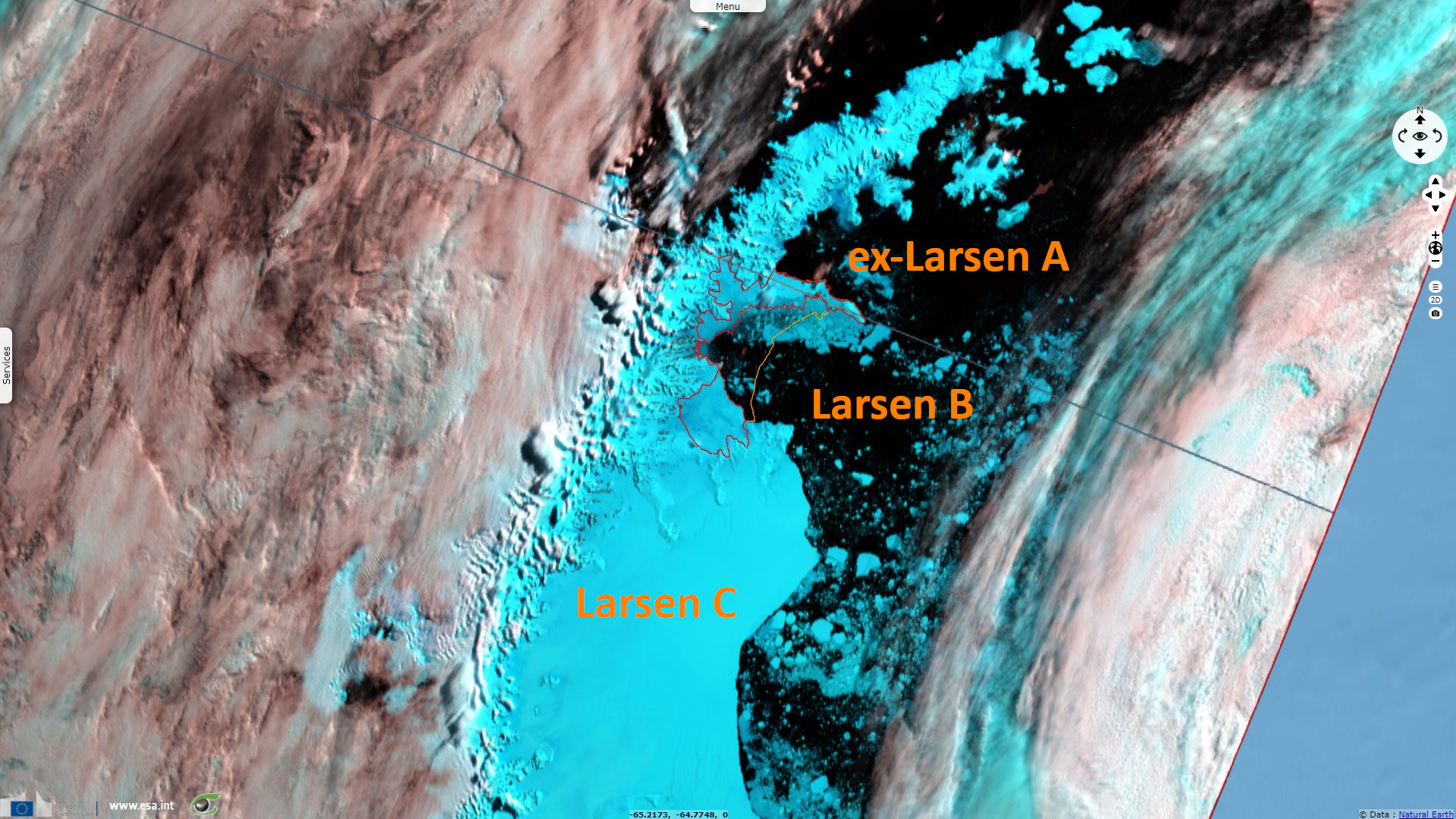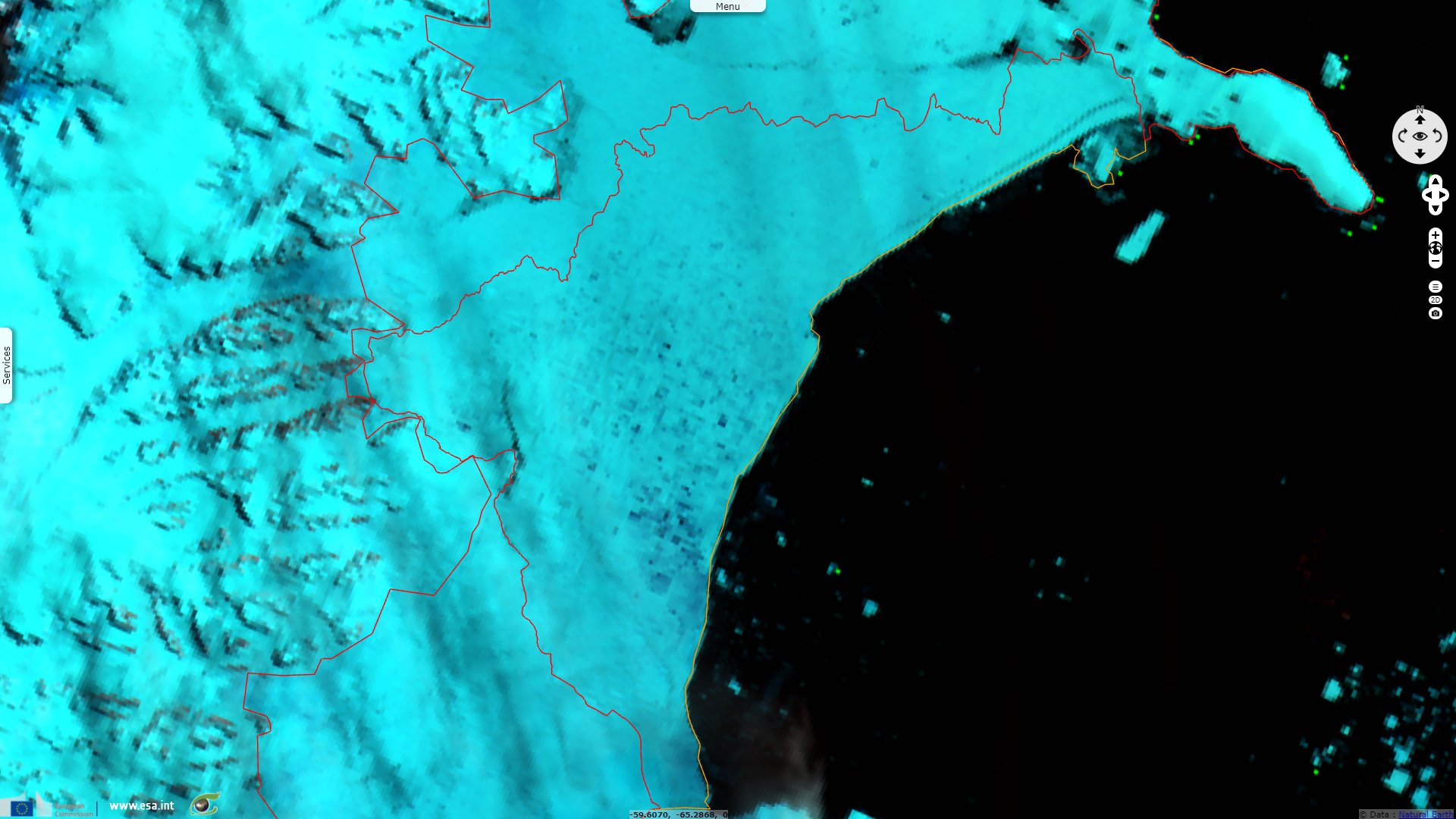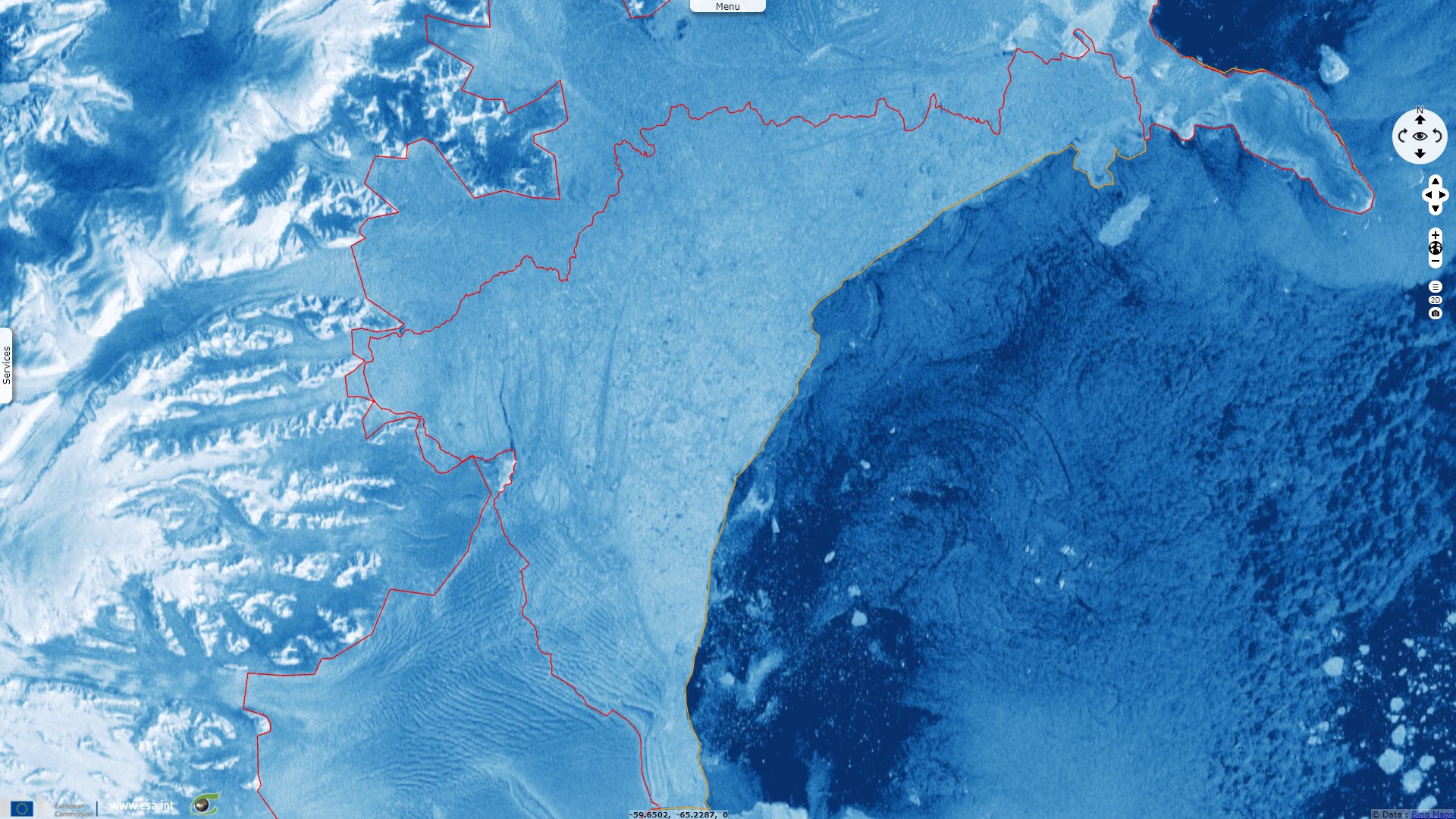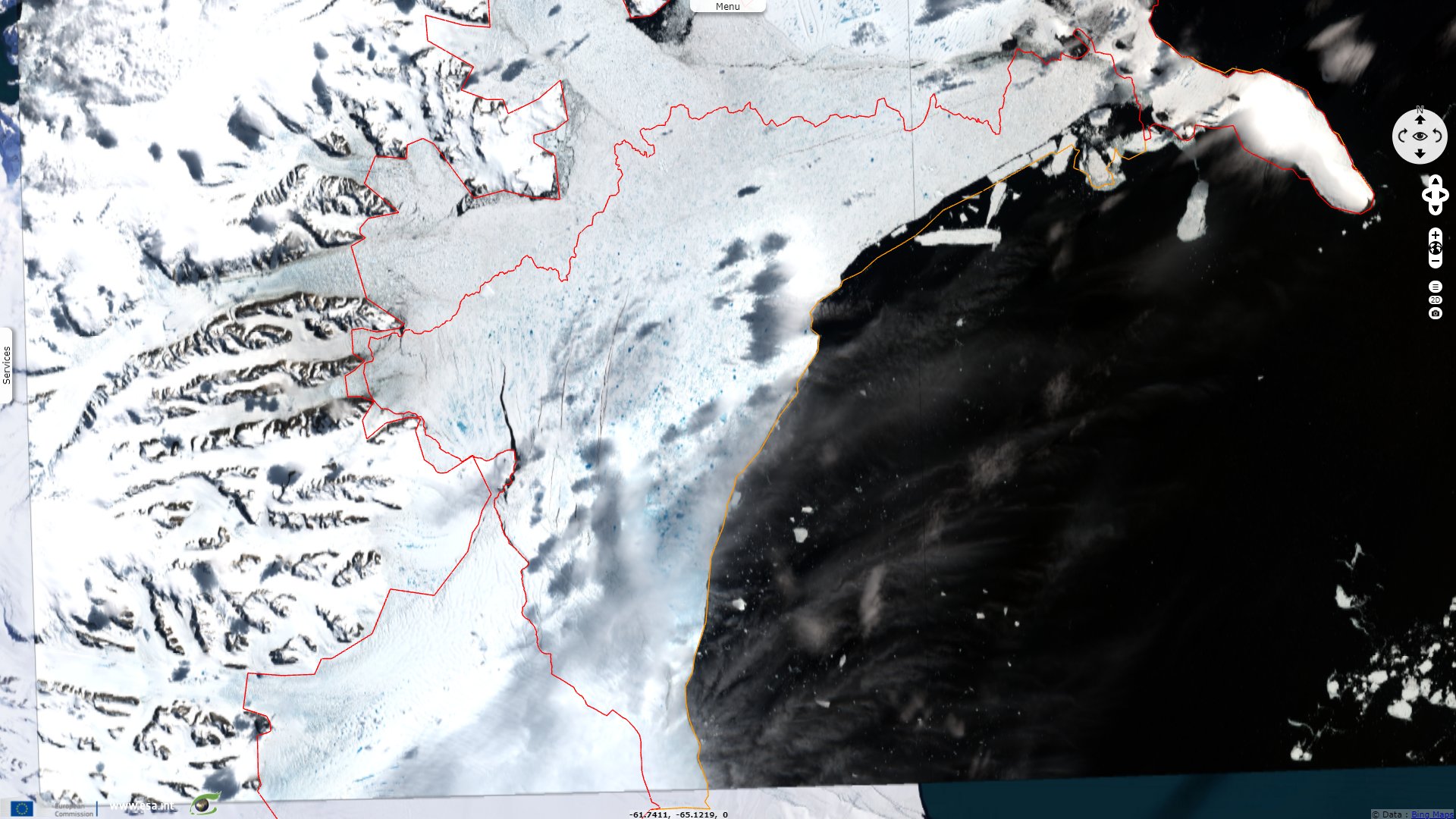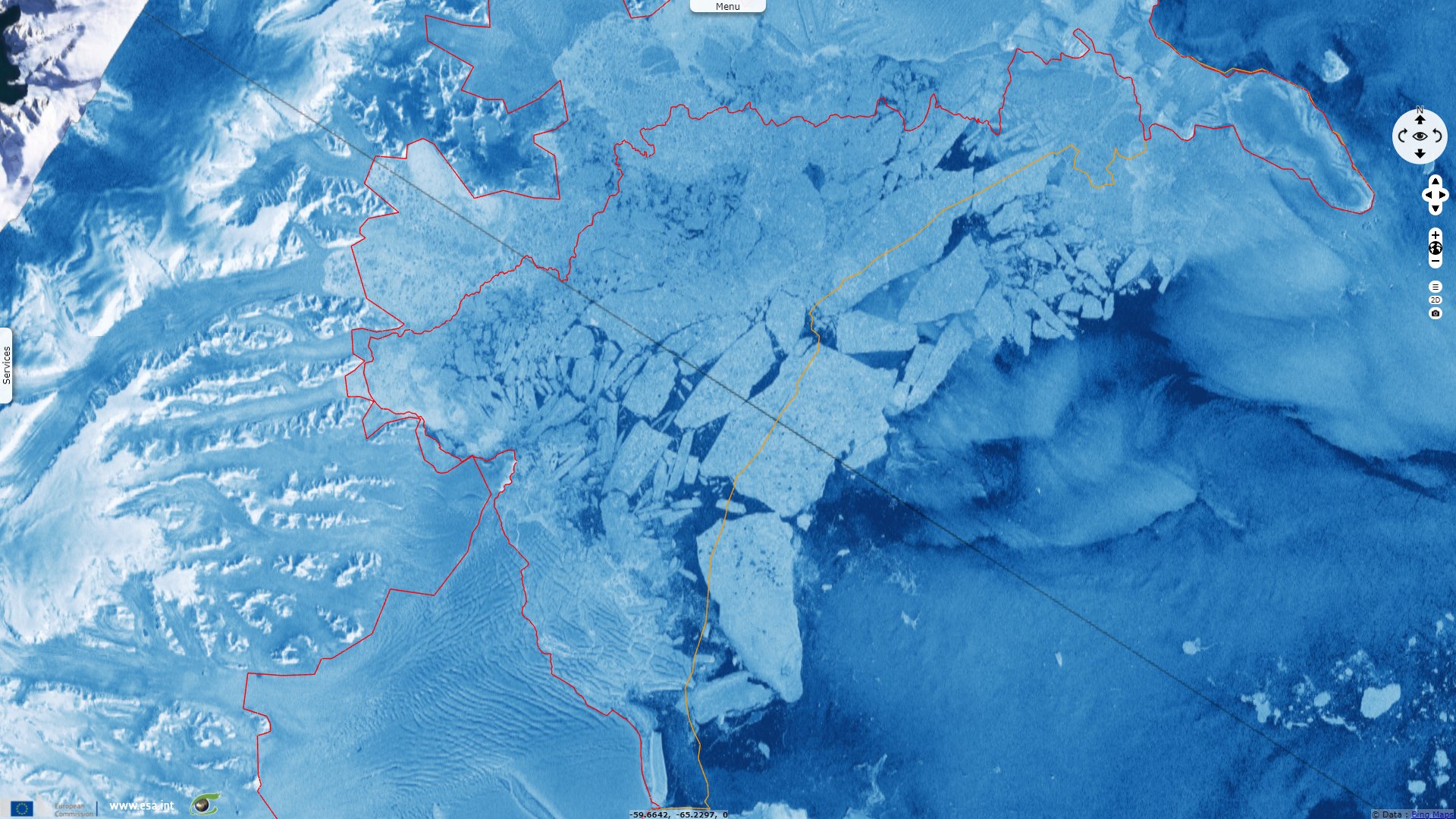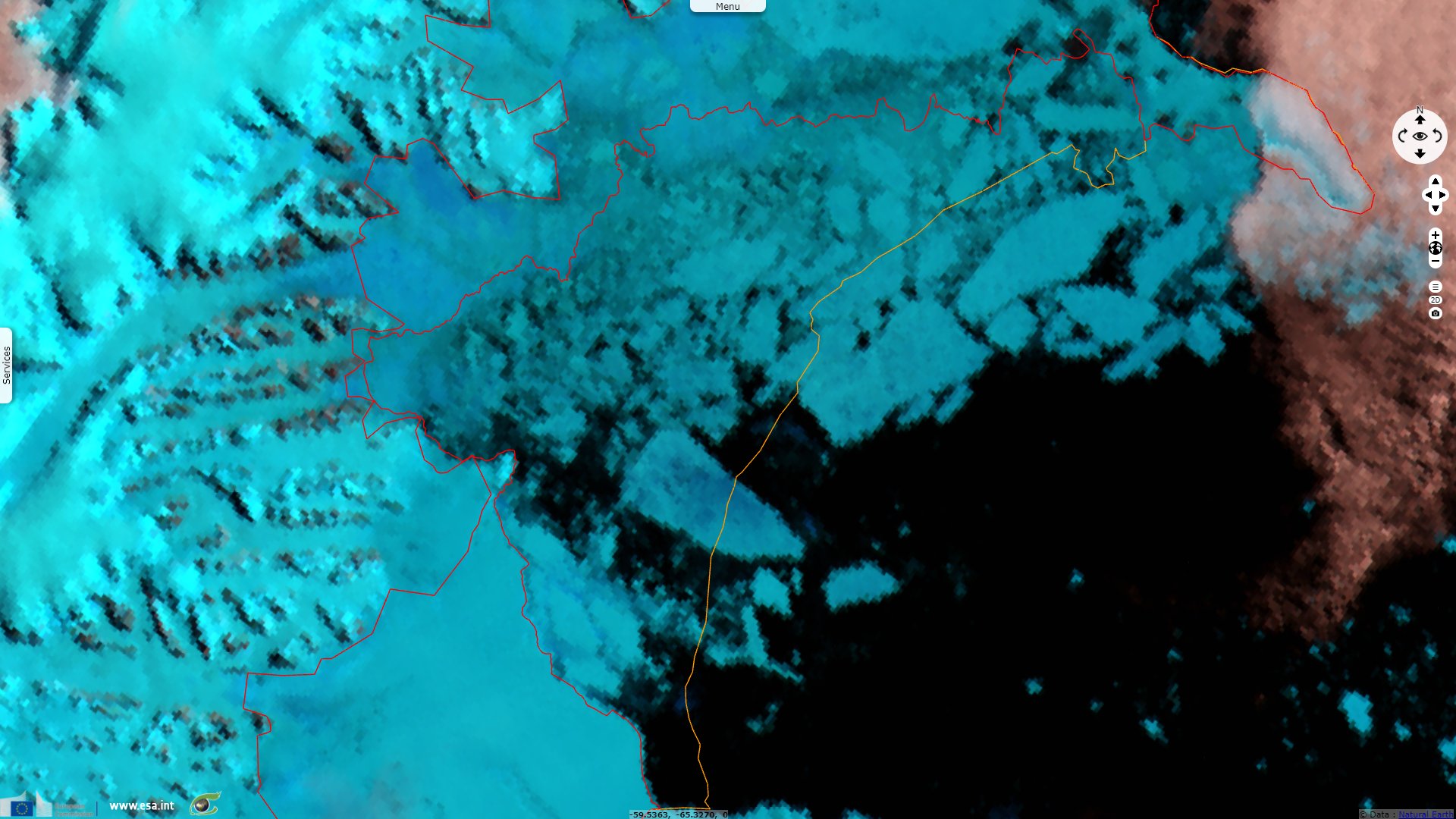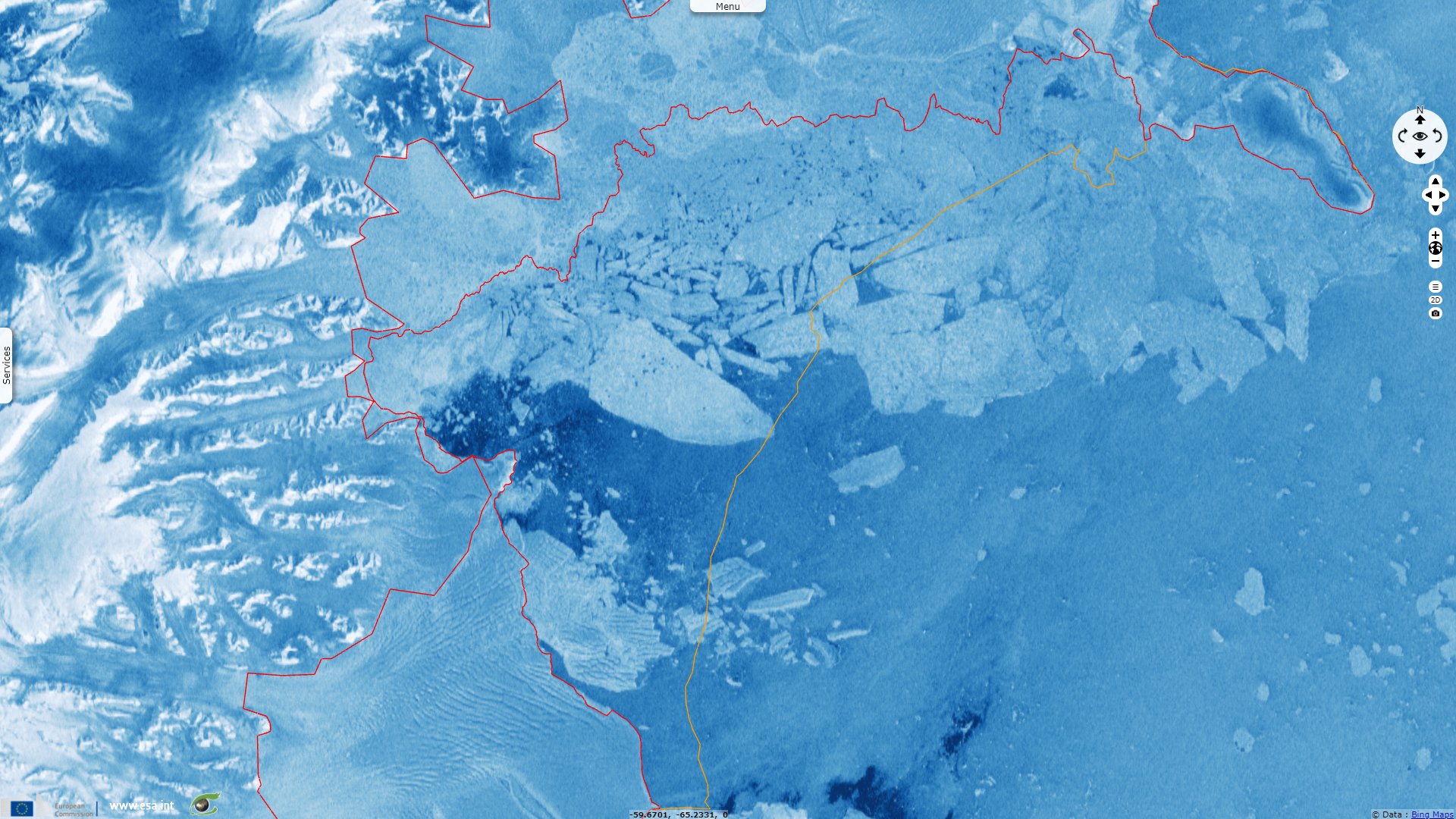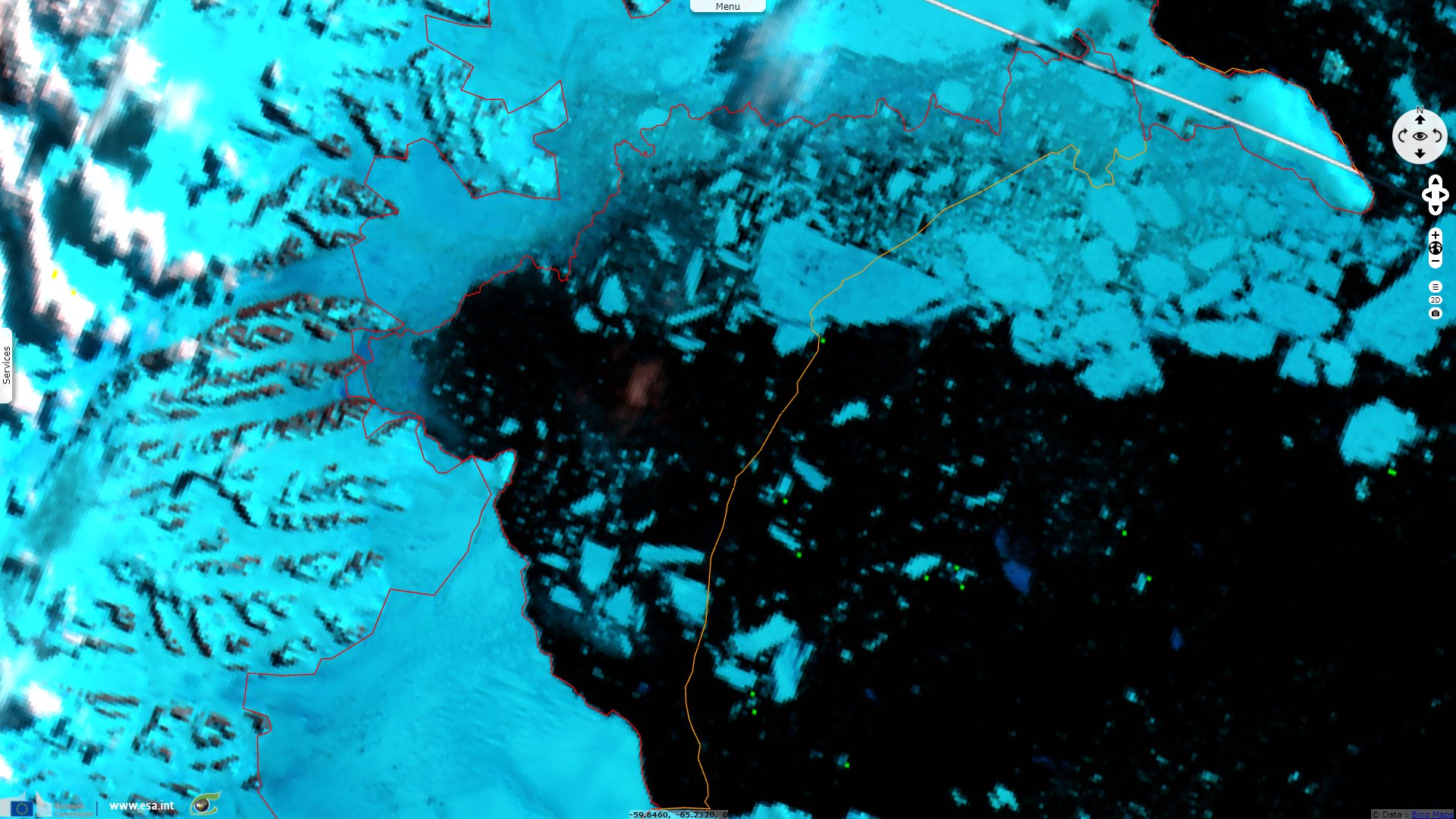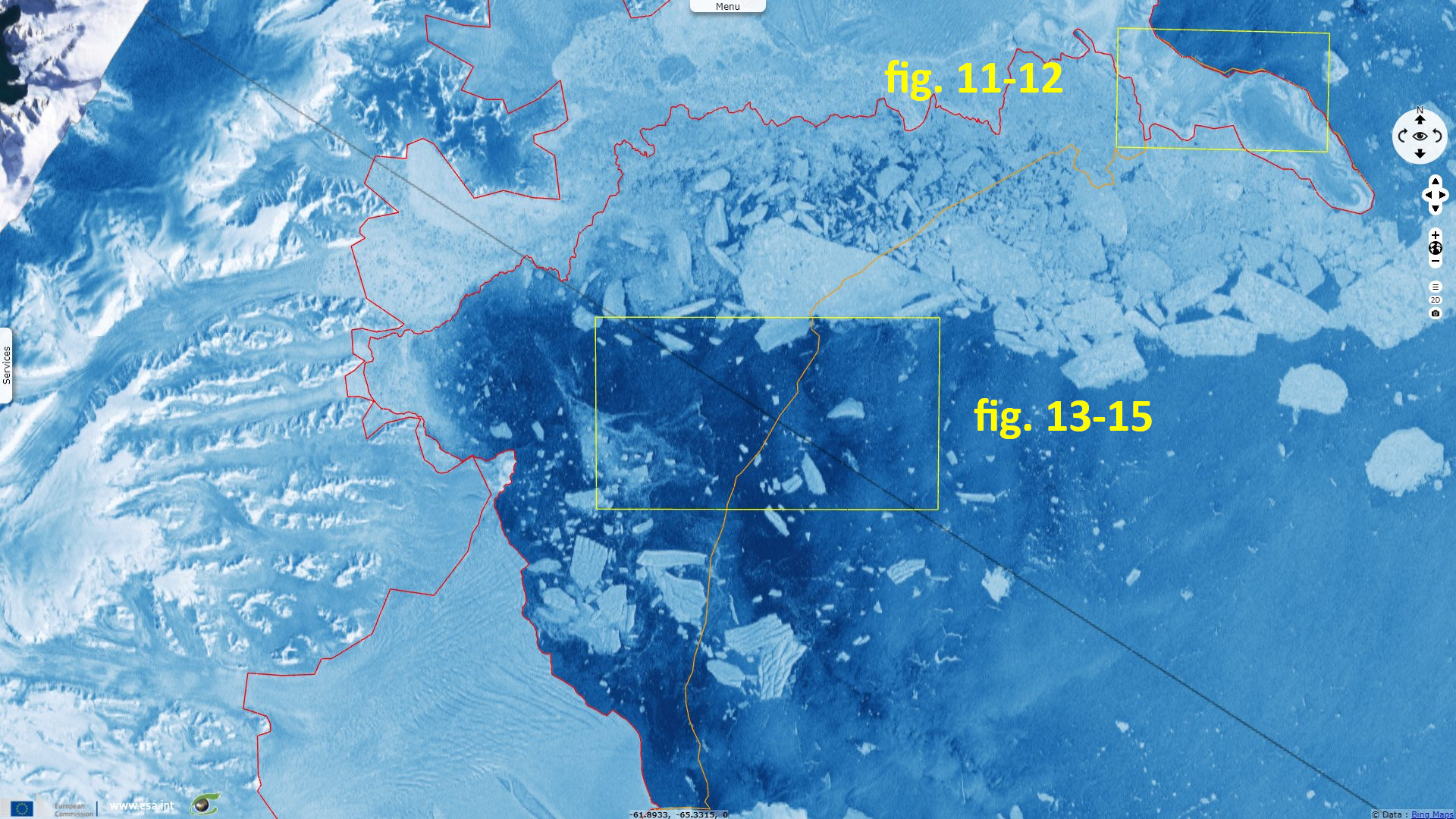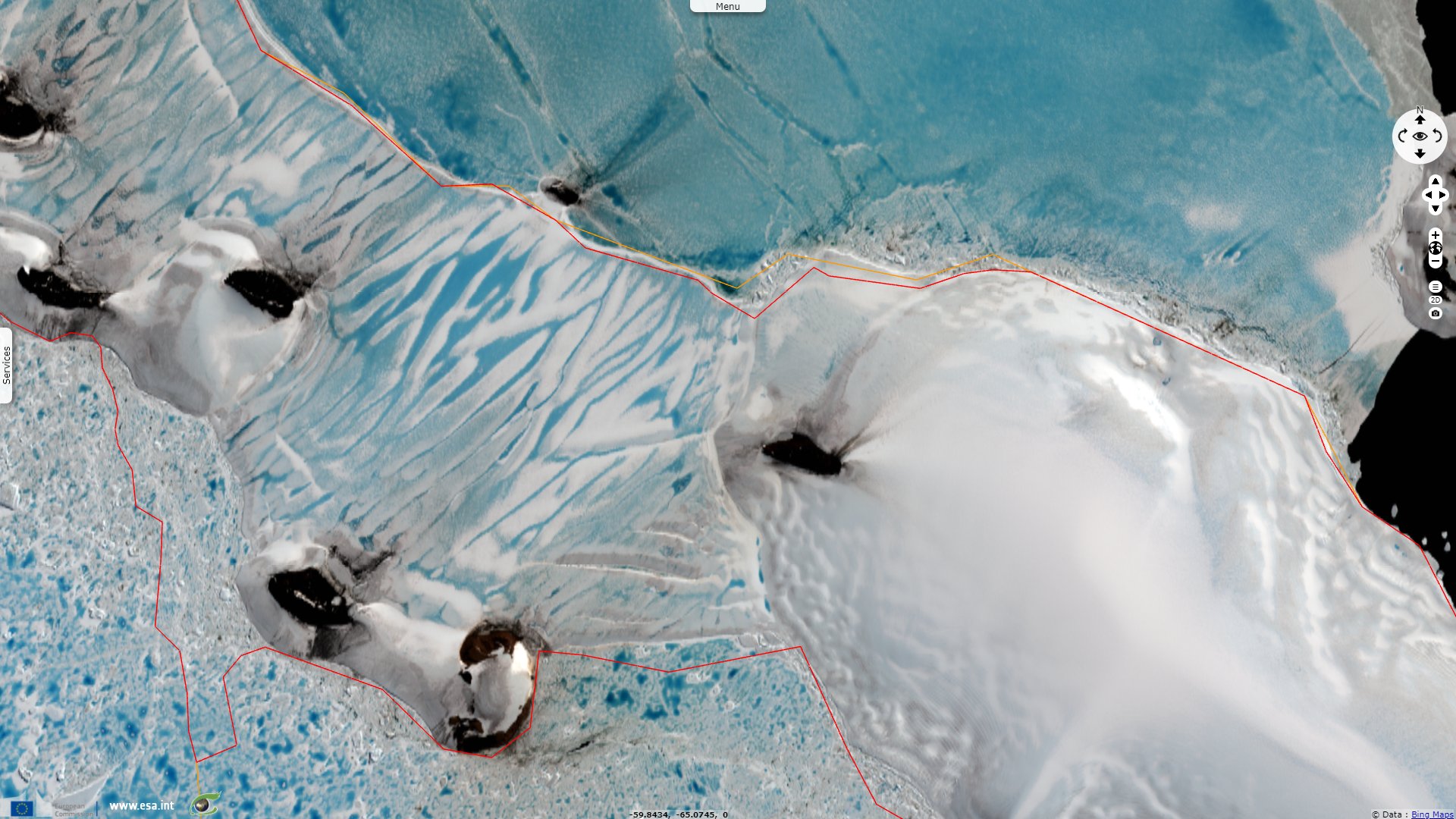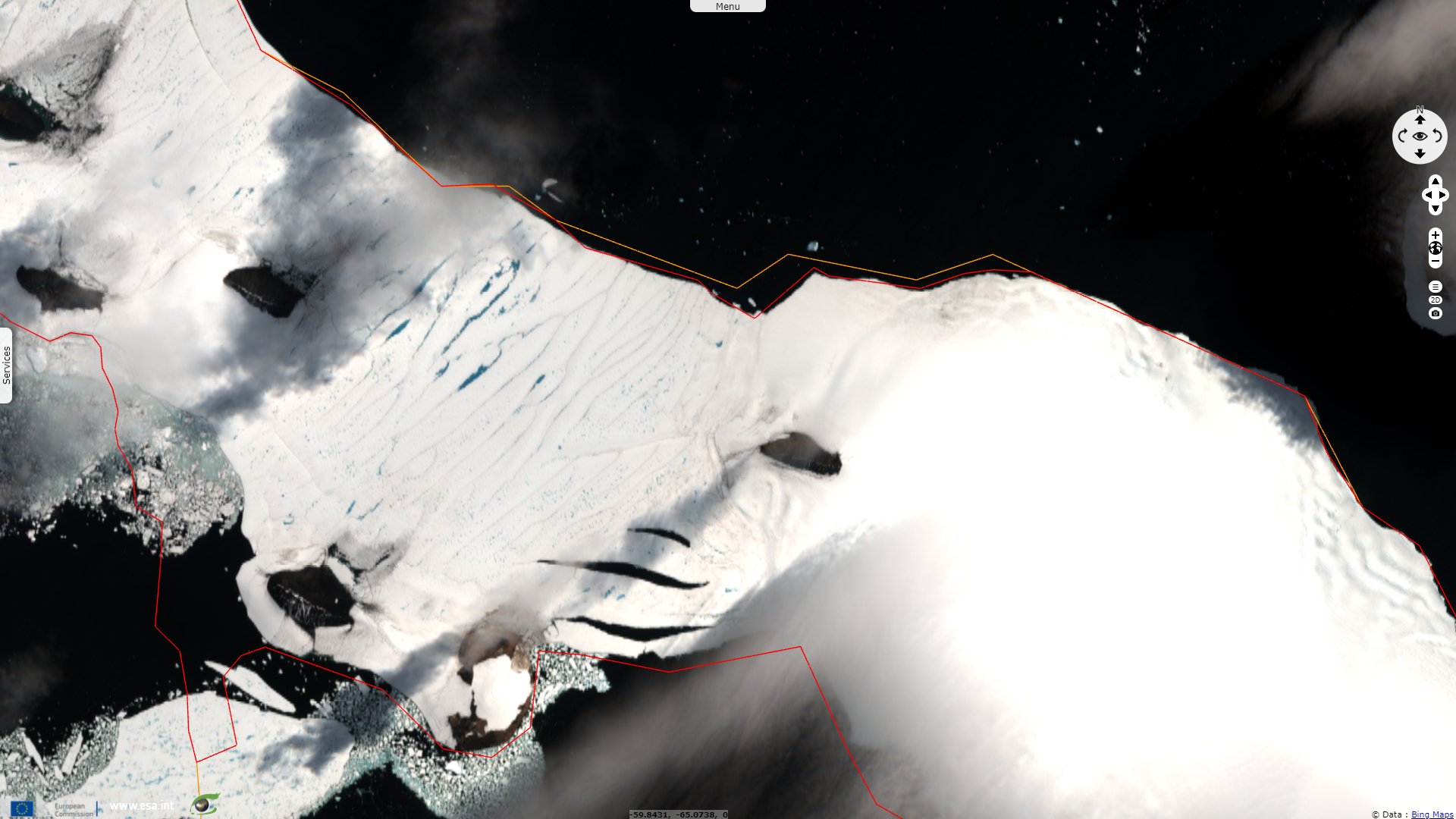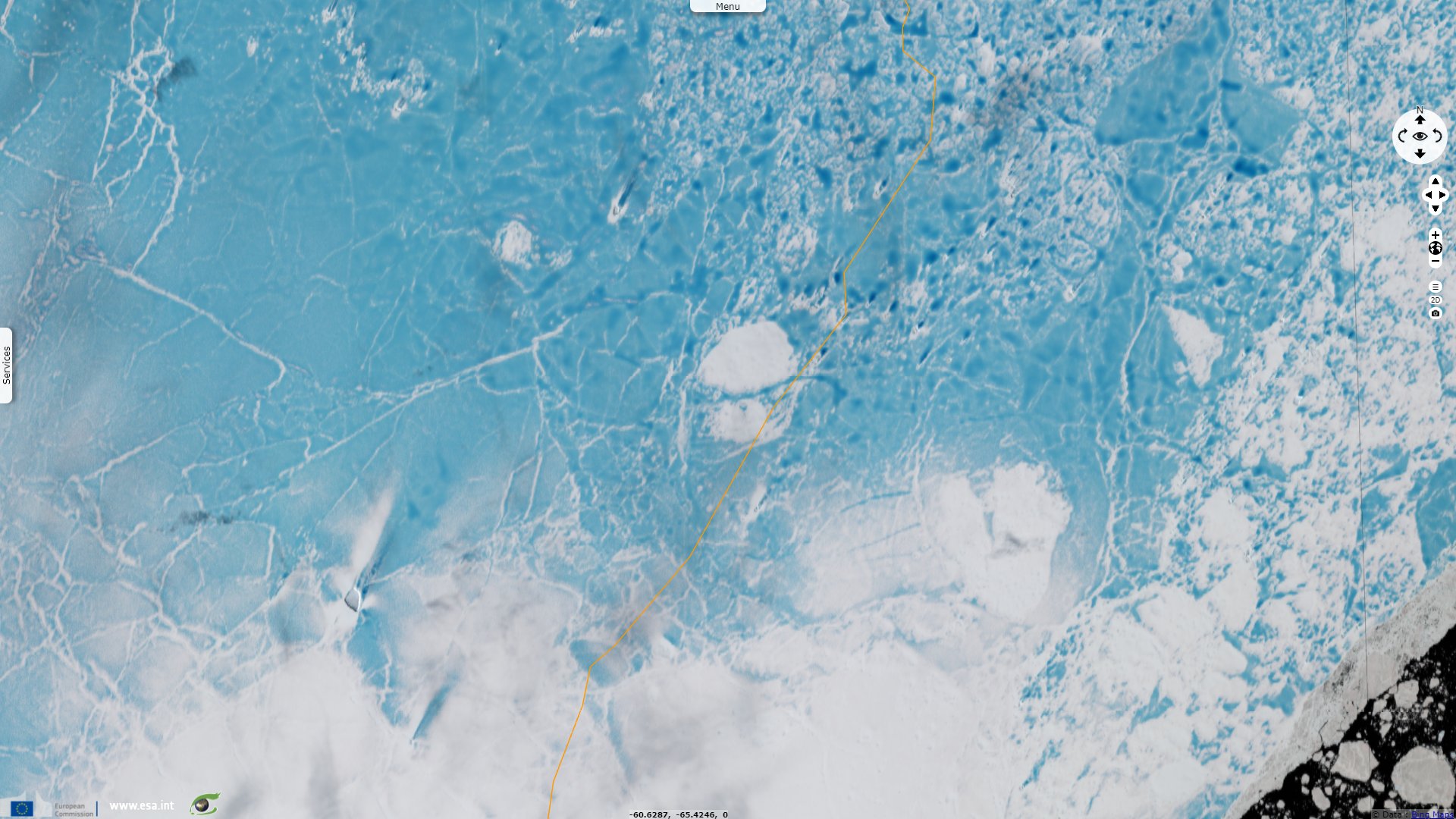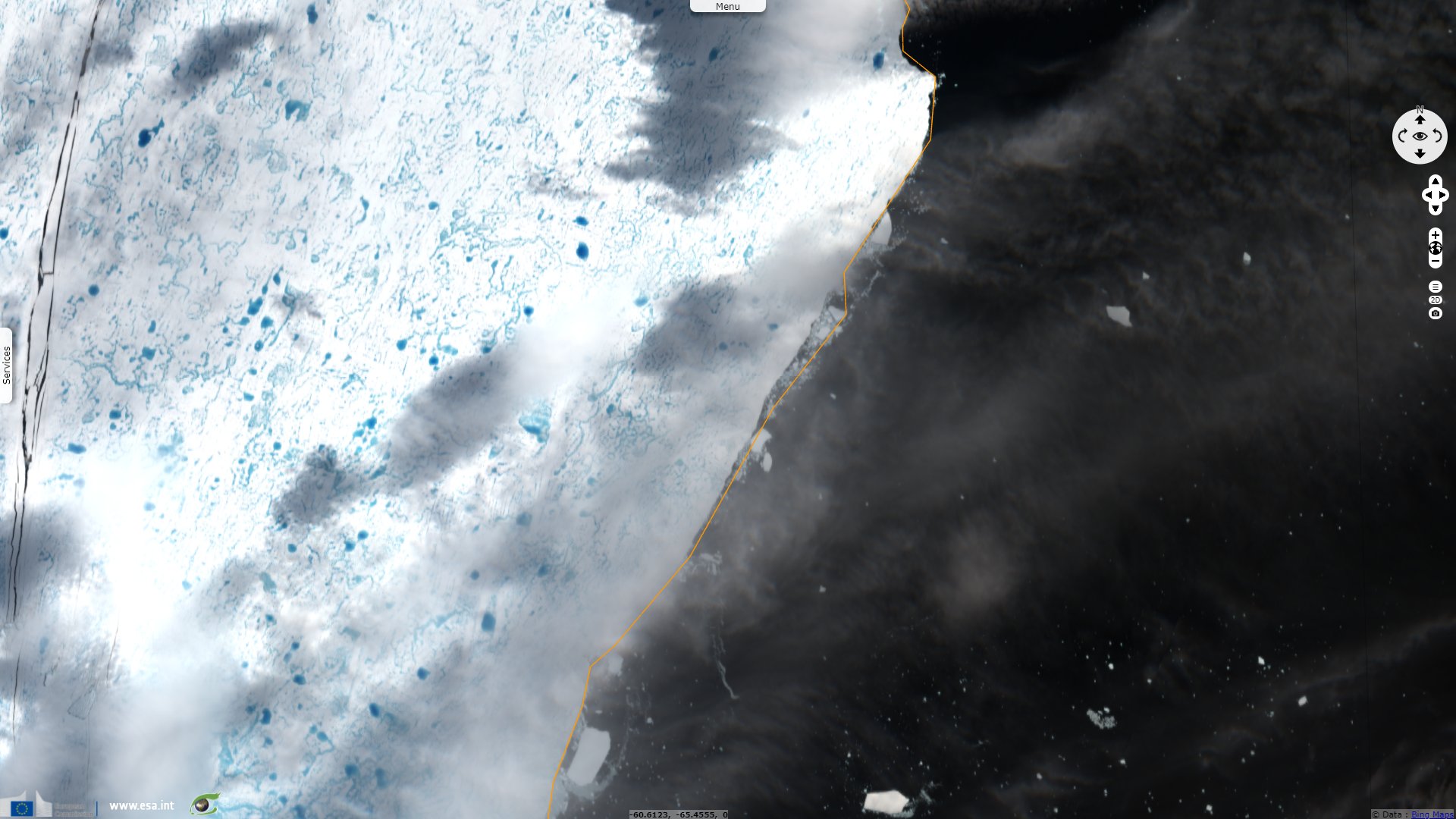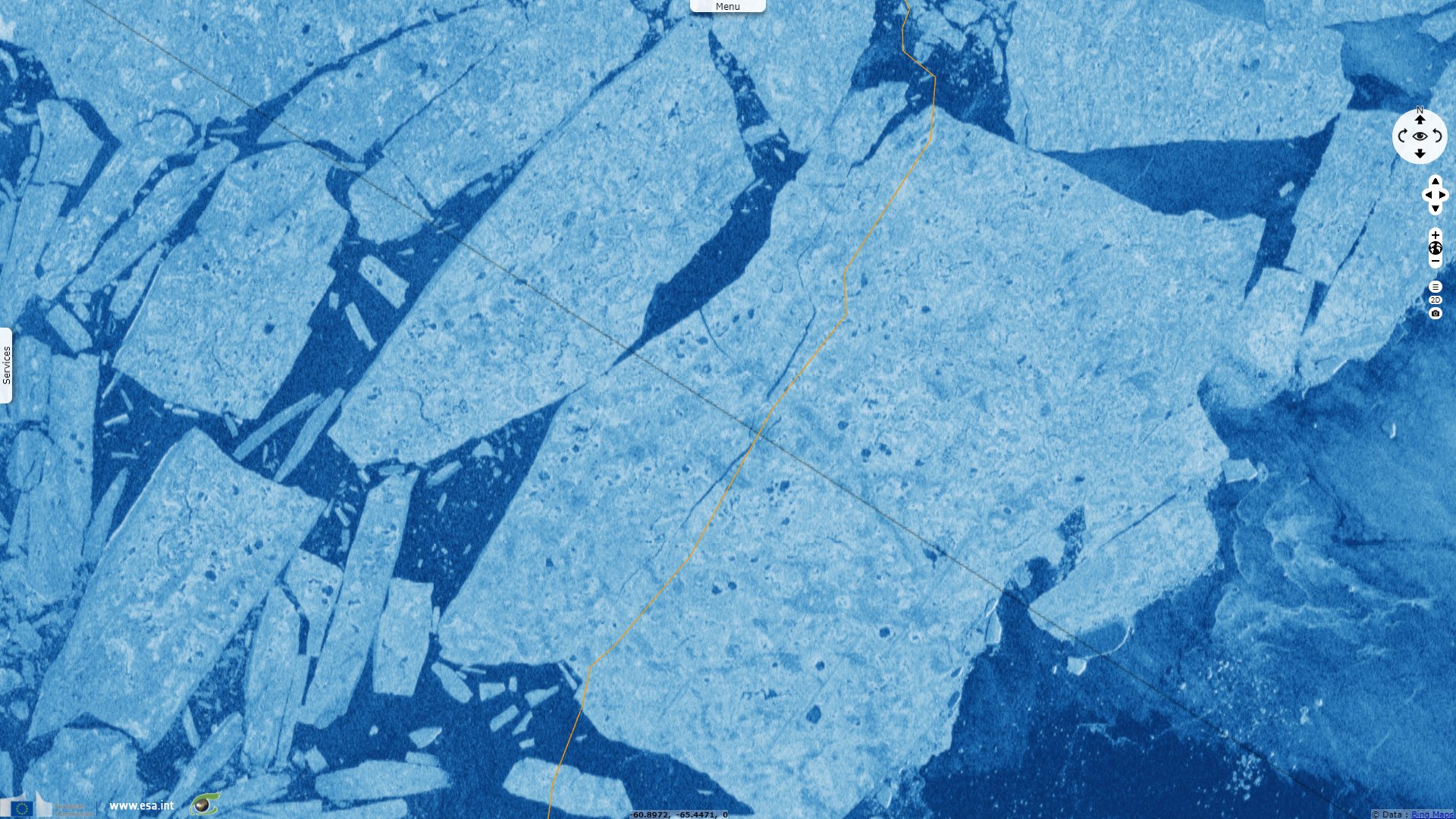Larsen B ice shelf collapses, Antarctic Peninsula
Sentinel-2 MSI acquired on 05 January 2016 at 13:19:12 UTC
Sentinel-1 CSAR EW acquired on 16 January 2022 at 08:10:10 UTC
...
Sentinel-1 CSAR IW acquired on 04 February 2022 from 08:01:58 to 08:02:23 UTC
Sentinel-3 SLSTR RBT acquired on 04 February 2022 from 12:48:18 to 12:51:18 UTC
Sentinel-1 CSAR EW acquired on 16 January 2022 at 08:10:10 UTC
...
Sentinel-1 CSAR IW acquired on 04 February 2022 from 08:01:58 to 08:02:23 UTC
Sentinel-3 SLSTR RBT acquired on 04 February 2022 from 12:48:18 to 12:51:18 UTC
Keyword(s): Polar, sea ice, ice shelf, climate change, global warming, Antarctic ocean, Antarctic Peninsula
"Antarctica is experiencing definitely warmer temperatures so far this year. As a consequence, in January sea ice extent was the second-lowest in the 44-year record. The image below shows the Antarctic sea ice extent at the beginning of February, along with daily ice extent data for five previous years.", wrote Renato Colucci, specialist of the cryosphere and the climate, in severe-weather.eu.
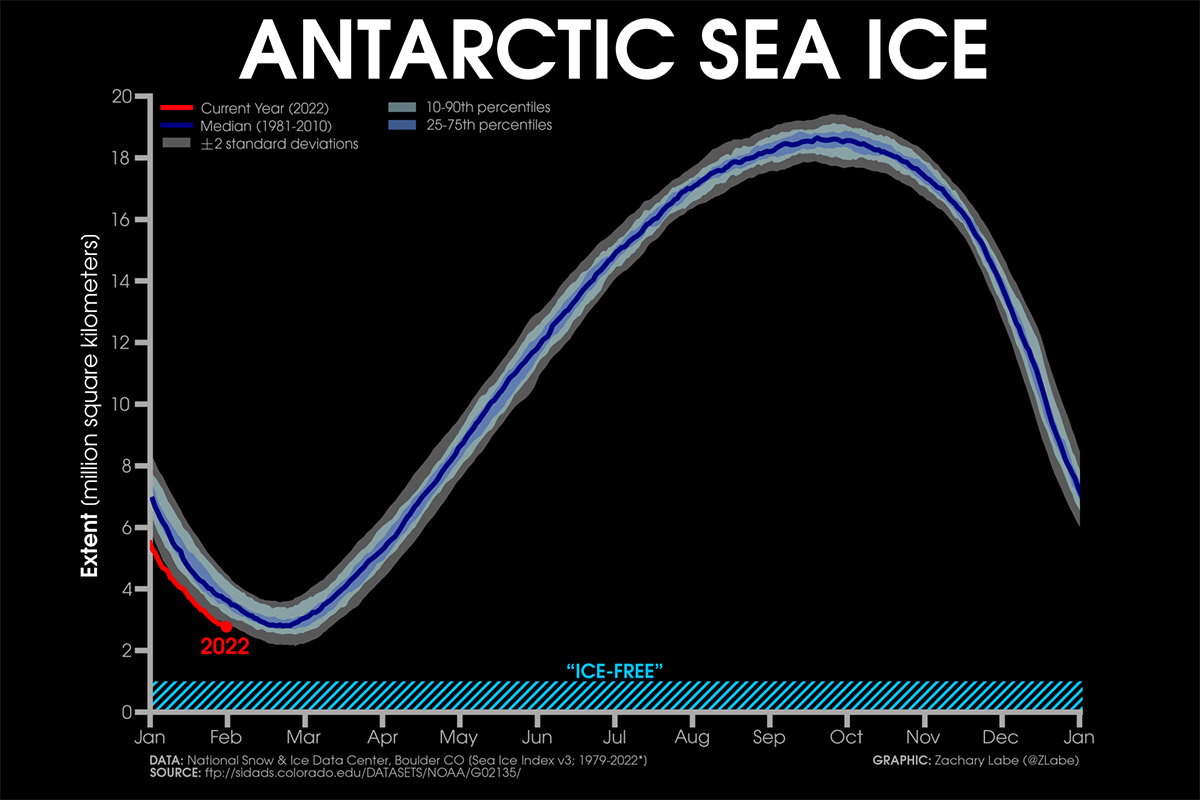

"In these days sea ice extent is running roughly at the same pace of season 2017-2018. Regionally, ice extent is tracking below levels observed for 2017 in the Indian and Pacific sectors, but above levels for that year in other sectors."
"In 2017, only the Ross Sea recorded a very low extent, therefore it was the main driver of the record low hemispheric sea ice extent. Likewise, in 2021-2022 summer none of the specific regions have record low extents, but all are well below average leading to the second-lowest Antarctic sea ice in the satellite record, above 2017."
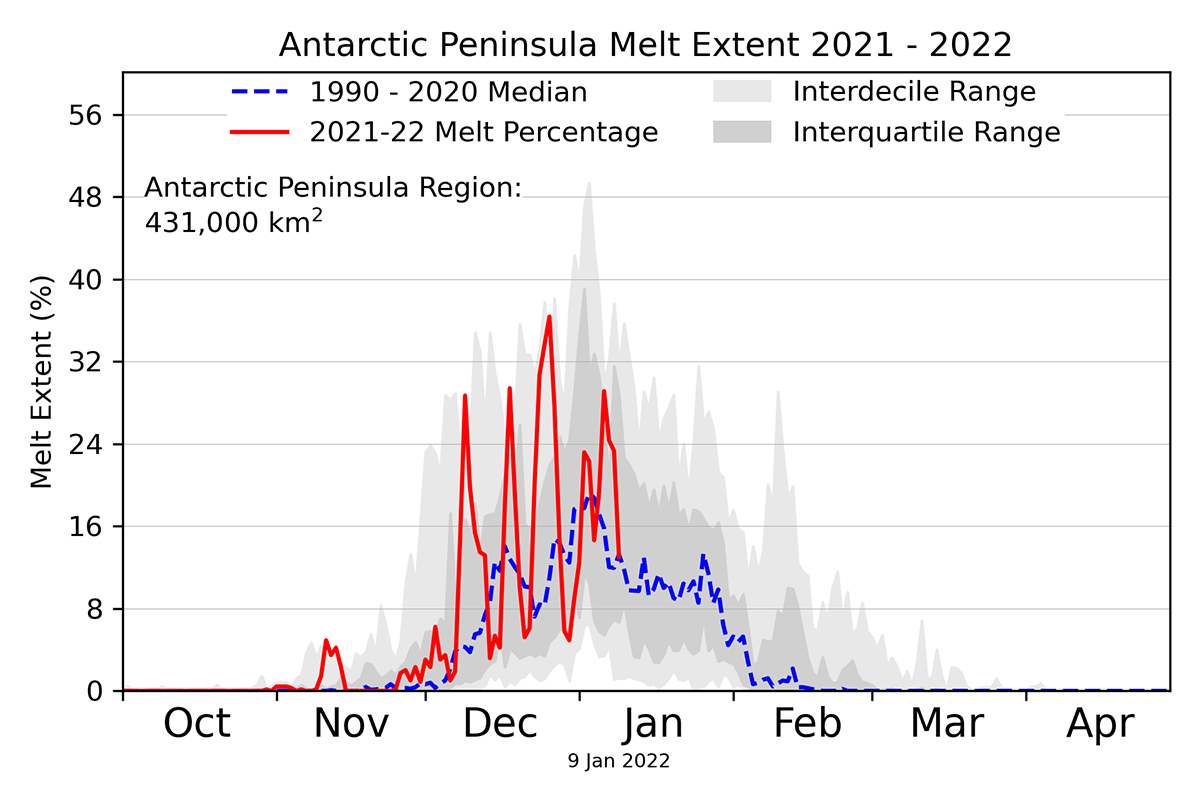 "The northern part of the Antarctic Peninsula was affected by a series of recursive melting peaks that occurred in December and in January, causing extreme melting well above the long-term average. Such events have been amplified by severe foehn wind events."
"The northern part of the Antarctic Peninsula was affected by a series of recursive melting peaks that occurred in December and in January, causing extreme melting well above the long-term average. Such events have been amplified by severe foehn wind events."
"As a consequence, multiyear fast ice in the Larsen B embayment, in place continuously since early 2011, showed widespread meltwater flooding with some deeper ponds and some areas drained by narrow fractures. Between January 16 and the 21st, the sea ice of the Larsen B ice shelf, linked to the Antarctic Peninsula’s, crumbled and disintegrated."
Renato Colucci added in another article: "Continuously present for the past more than 10 years, landfast sea ice in the Larsen B embayment is breaking out again. Between January 16 and the 21st, sea ice linked to the Antarctic Peninsula’s crumbled and disintegrated."
"Indeed this breakup is the latest in a series of remarkable events in the Larsen B embayment over the past twenty years. In early 2002, the shelf abruptly fractured. From 31 January 2002 to March 2002 the Larsen B sector partially collapsed and parts broke up, with 3,250 square kilometers of ice suddenly gone, an area comparable to the US state of Rhode Island."
"Ice shelves have attracted a great deal of scientific and media attention in recent years, partly because spectacular ice shelf break-up events have been interpreted by some of the natural symptoms of global warming."
"Three broad types of ice shelves can be recognized: glacier ice shelves, consisting of the floating margins of outlet or valley glaciers; sea ice shelves, or areas of locally grounded fast ice fed by surface snowfall and basal freezing; composite ice shelves, basically a mix of the two."
It looks like the Antarctic Peninsula was grazed by an atmospheric river the day before the land-fast ice breaks up. Between 19 and 20 January 2022, a huge 400 km² piece of sea ice from Larsen B, a portion of the Antarctic ice barrier, disintegrated. Likely there were some intense foehn winds and swells on the exposed front to help destabilize the ice pack."
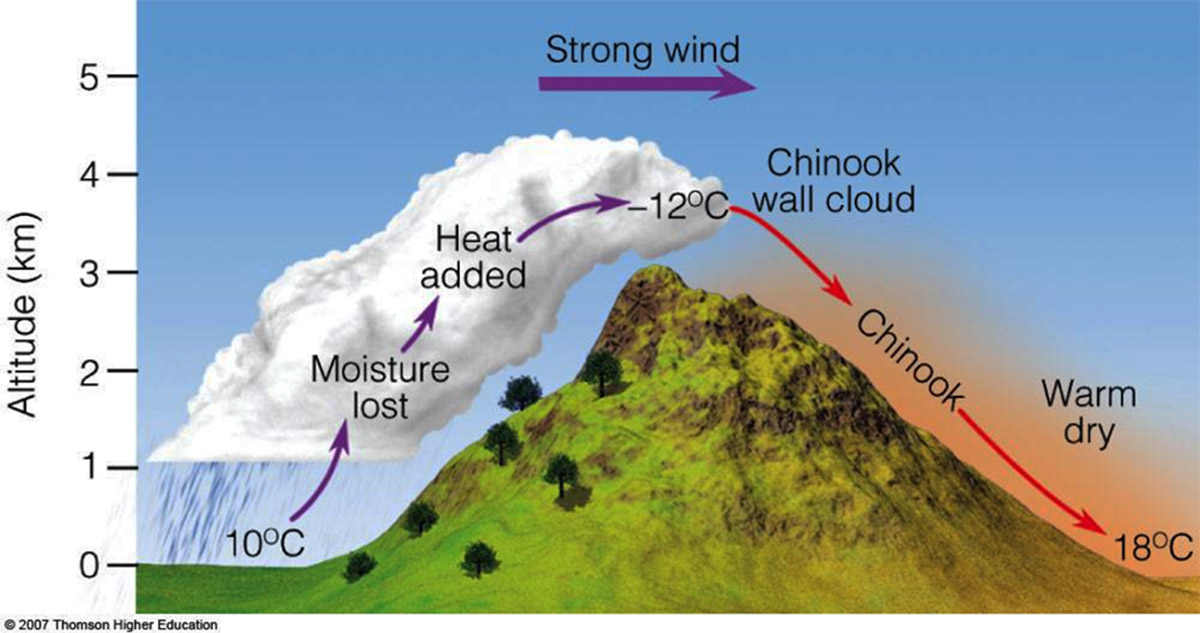

Blue ice occurs when snow falls on a glacier, is compressed, and becomes part of the glacier. During compression, air bubbles are squeezed out, so ice crystals enlarge. This enlargement is responsible for the ice's blue colour.
"The close-up image below shows the Larsen B embayment with deep meltwater fractures, and the remnant of the older Larsen B, north and south of the new Larsen B."
